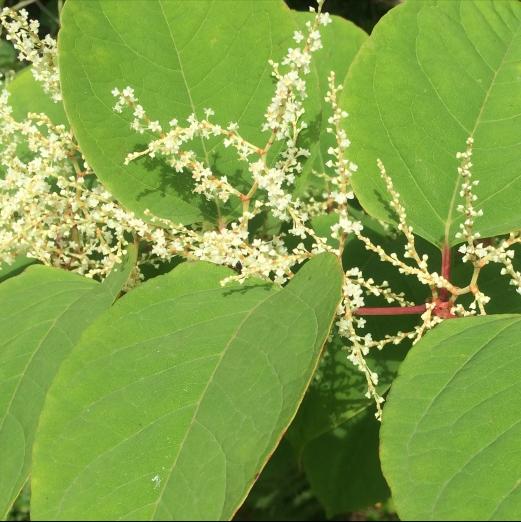
One of the slides in my current presentation shows a river frontage in what appears to be a very “natural” setting… However, on closer inspection it is possible to see:
- Himalayan balsam – along the river edge
- Japanese Knotweed – along the main bank section
- Giant Hogweed – in a pocket of open ground
- Sycamore trees – filling the upper canopy
I then go on to explain the nature of these plant relationships.
In very simplistic terms the Himalayan balsam grows within the flood plain of the river but does not bind the soil together. The balsam grows to the preclusion of our native species which would typically be growing in this section of river bank.
In the higher reaches of the river bank we get Japanese knotweed growing. The knotweed does not like to grow in areas prone to flooding so does not colonise the flood zone of the river. Typically the Environment Agency will put overflow sections on rivers prone to flooding – these sections of drain are typically just above the typical flood height and designed to take water during only the most dramatic of flood events. The entrance to these overflow sections is usually grated with a steel cage to stop debris getting into the channel of the drain.
Over winter the Himalayan balsam dies back leaving bare ground with little or no root holding the soil together. During the winter months we tend to get heavy rainfall leading to flooding incidents on our rivers. The debris from the surface growth of the balsam dying back falls into the watercourse and floats downstream and ends up in the steel grate of the over-flow channel.
The bare soil left unconsolidated after the winter die back the collapses into the river. As the soil collapses the river bank above also breaks up and falls into the watercourse where further dead stems of the Knotweed float along and block the drain further.
The giant Hogweed stems collapse and fall into the river along with thousands of viable seeds. The stems float downstream and cause additional problems as they also block the overflow drains.
With nowhere to go – the river floods the adjacent land taking viable knotweed propagules and viable seed onto new areas primed and ready to be taken over….
So in answer to the original question of a river frontage being a very…. ‘natural setting’ – I’m sorry but NO …what you are actually looking at is a battle ground – with a war for total domination taking place before your very eyes…
It’s not NATURAL….it’s a man introduced nightmare.
Mike C
